
Back to Blogs
Discover
Masters of The Air
The Hollywood blockbuster series set in the East of England...

A new TV series starring BAFTA-Winning Best Actor Austin Butler will be coming to Apple TV+ this year based on Donald L. Miller’s non-fiction book 'Masters of The Air' and produced by Steven Spielberg and Tom Hanks.
The book tells the true story of the bomber boys of the USAAF 8th Air Force, known as the Mighty Eighth, who brought the war to Hitler's doorstep.
Over the course of 9 episodes, the TV series Masters of The Air will tell the legendary story of the American Eighth Air Force, a bomber unit put together shortly after Pearl Harbor and sent to bases in the East of England. The force had one supreme aim: to bring the German war economy to a stop through high-altitude strategic bombing. In particular the series focuses on the men of the 100th Bomb Group, known as The Bloody 100th, which was based at Thorpe Abbotts in Norfolk, just a 45 minute drive from Bury St Edmunds.
In the book, Miller takes readers from the adrenaline filled battles in the sky, to the airbases across the East of England, the German prison camps, and onto the ground to understand the devastation faced by civilians.
During WWII, the East of England became home to thousands of American air force personnel – over 350,000 in total. Norfolk, Suffolk, Essex and Cambridgeshire would never be quite the same again. The Friendly Invasion, as it was dubbed, introduced a rural area to the big band music of Glenn Miller, peanut butter, chewing gum, nylons, donuts, jitterbugging, Coca Cola and much more.
RAF Bury St Edmunds became home to the 94th Bomb Group from 15 June 1943 to 12 December 1945 flying the B-17 Flying Fortress and they are mentioned in Miller's book. From Bury St Edmunds (now Rougham Airfield), the men of the 94th Bomb Group flew more than 300 missions. Before that it was a base for the 47th Bombardment Group and the 322nd Bomb Group. This year is the 80th anniversary of the 94th Bomb Group arriving in the UK.
The Airfield opened in September 1942 and was specifically designed for a United States Army Airforce unit (USAAF) bomb group and was home for some 3,000 personnel in Nissen and other temporary buildings.
Donald L. Miller visited the East of England when he was a fellow at All Souls College in Oxford in the 1980s and became fond of Bury St Edmunds.
He said: “I would drive out to East Anglia with my wife to visit its haunted towns: Cambridge, with its soaring medieval spires; Norwich, a handsome, high-sitting cathedral town; and Bury St Edmunds, one of the most splendid places I have ever visited.
“Many years later I went back to East Anglia in search, not of a city, but of a story.”
Known by the USAAF as Station 468, Bury St Edmunds not only welcomed 3,000 GIs during WWII but the Glenn Miller Ensemble, legendary comedian Bob Hope and Hollywood movie star Clark Gable, who all visited to entertain the troops.
On September 15th, 1944 the 94th Bomb Group held a 200th Mission
Party, with the Glenn Miller ensemble putting on a great show. Leroy Kuest
remembered: “Glenn Miller’s band showed up with singer Dinah Shore. The great
man wasn’t there, but Ray McKinley led the musicians and the audience was
swollen by land army girls, civilians and other folk, dancing on the concrete
floor of the main hangar. We had a wonderful time.”
In Miller's book he shares the story of the heroism of Brigadier General Frederick Walker Castle, which led to him being posthumously awarded the Congressional Medal of Honour by President Truman and a major air base in the United States being named in his honour. Castle was the Commanding Officer of the 94th Bomb Group at Bury St Edmunds from 19 June 1943 to 16 April 1944.
Today, Rougham Control Tower is one of the best-preserved military buildings in the region, and features a dedicated exhibit in memory of Brigadier General Frederick Walker Castle. The Museum’s dedicated volunteers carry on the legacy of the Americans who called Bury St Edmunds home.
Visit the Real Life Masters of The Air Locations

Pictured: Members of 331st Squadron. Photo by kind permission of Brad Schwartz, from his grandfather's collection.
Rougham Control Tower Aviation Museum
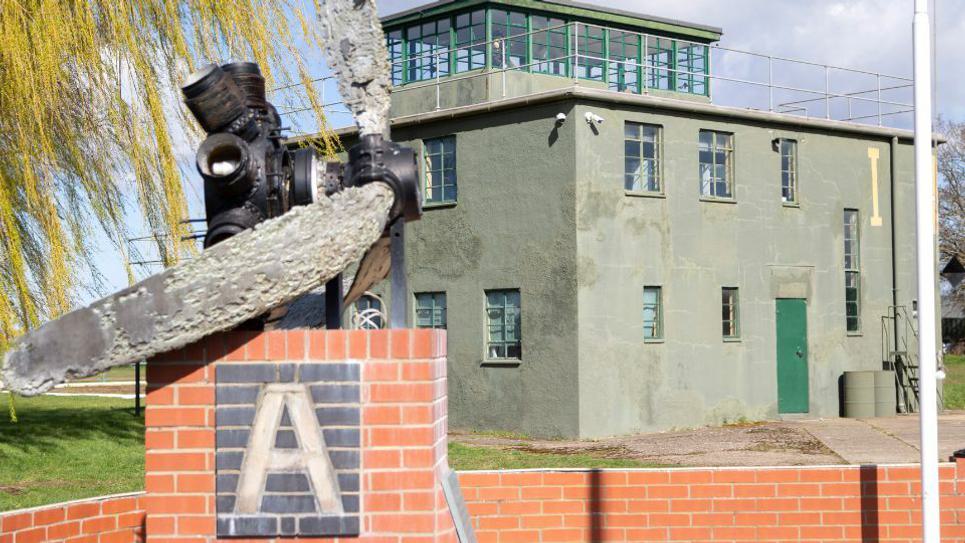
Bury St Edmunds was home for the 94th Bomb Group
The Rougham Control Tower Aviation Museum, opened in 1992 and is home to a fascinating collection of memorabilia including photos, artefacts, uniforms, letters, and photographs, which tell the story of the Bury St Edmunds base and the US personnel stationed there.
You’ll find a collection of memorabilia donated by families of the men that were stationed there throughout WWII including from the family of Preston Clark who flew The Eric Ferry, The Eagles Wrath and the Leading Lady as pathfinder crew from the base.
Then there’s the wedding dress of British aircraft inspector Edith Miller who married her dashing GI B17 bomber hero Tom Miller on 12 May 1944, just after VE Day. The couple’s family, along with many other generous American families, have kindly given the museum some of their family treasures to display. They include Edith’s wedding dress, photographs and love letters which provide a wonderful insight into the romance of the era.
There is also wonderful collection of photographs and original concert posters of The Skyliners, the band of the 322nd Bomb Group after whom the new Skyliner Sports Centre and Skyliner Way in Bury St Edmunds is named.
This museum is is lovingly taken care of by volunteers in memory of all those who served here. They are on hand to show you their wonderful collection and are extremely passionate and knowledgeable about the airfield, its history and the era.
With a view from the top of the control tower and the sound of 40s music by such legends as The Glenn Miller Band (the Glenn Miller Ensemble played at the air base during WWII), you can imagine the deep roar of the engines and the sound of the propellers of the B17 flying fortresses as you look towards the runway.
The Museum will be open for 2023 every Sunday, from April to October. Visit Rougham Control Tower Aviation Museum website for details. Entry is FREE.

The World War II Royal Observer Corps Control Centre at Bury St Edmunds Guildhall
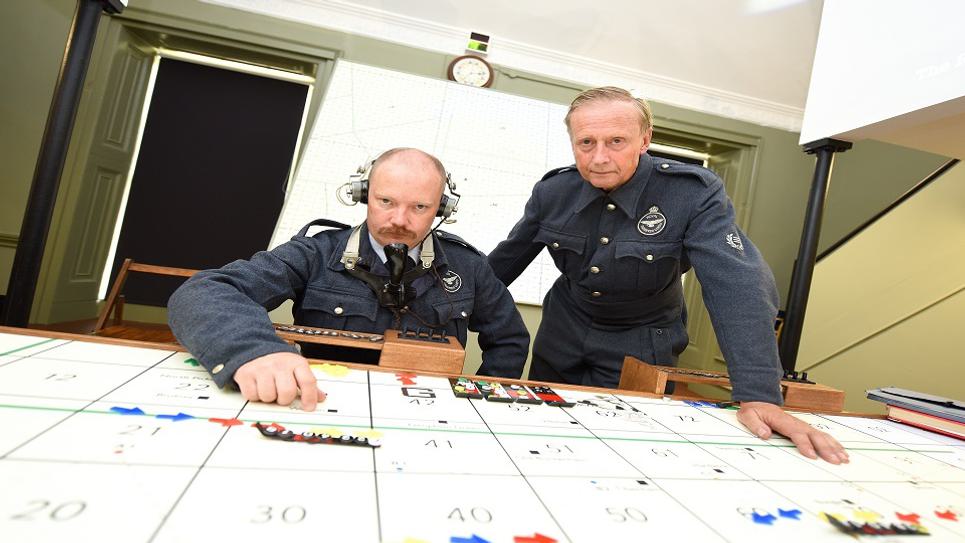
Visit the World War Two Royal Observer Corps Control Centre at Bury St Edmunds Guildhall
You can visit the WWII Royal Observer Corps Control Centre at Bury St Edmunds Guildhall – the only surviving room of its kind in the world.
From there, the Royal Observer Corps protected the skies of Suffolk and relaying vital messages to crews at local air bases including Rougham and Lavenham.
It is the only surviving ROC centre in the country and resonates with the buzz and tension of that dramatic era.
Tours of the Guildhall are available by appointment.
The Corn Exchange

The Corn Exchange where dances were held during WWII
The Corn Exchange, now a stunning Wetherspoons pub, on Abbeygate Street, has seen hundreds of years of history but during WWII it was a favourite for GI's based at Bury St Edmunds and Lavenham with its dances!
The sounds of boogie woogie and jazz could be heard from The Corn Exchange every Saturday night.
US servicemen also held parties at the Corn Exchange for local children, paid for from their own pocket. The Corn Exchange also held dinners for returning servicemen and on VJ Day there was dancing until midnight.
According to the 8th Air Force website, the many pubs and three cinemas in Bury St Edmunds kept visitors entertained. The Corn Exchange ran almost nightly dances 7.30-10.30pm.
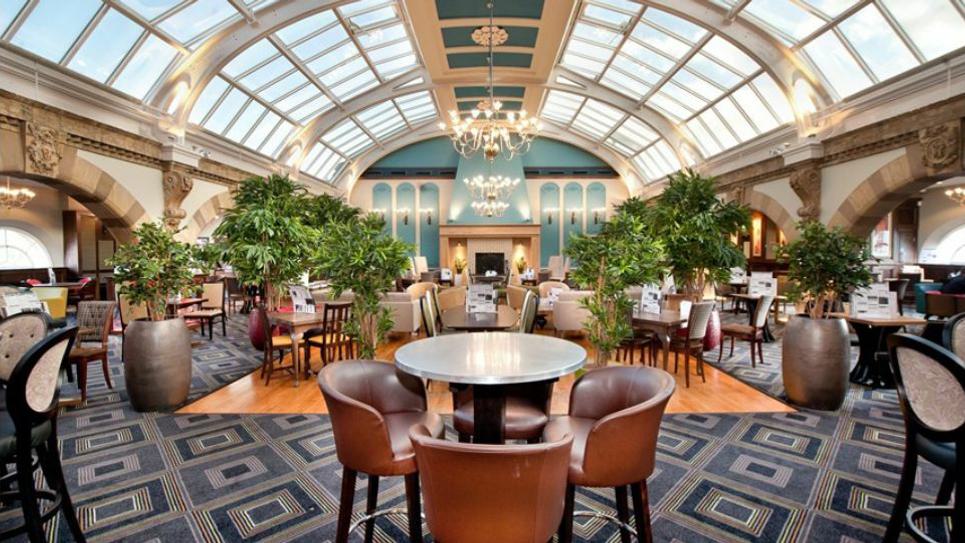
The inside of The Corn Exchange
The Athenaeum

The Athenaeum
The Athenaeum was a unique contribution to the American troops stationed in Bury St Edmunds during WWII.
As John Appleby says in his book Suffolk Summer, "The Athenaeum Canteen was a unique contribution of the people of Bury St Edmunds to the entertainment of the troops stationed there."
"A group of townspeople, headed by the Mayor, Mr E L D Lake, converted the room into a canteen for the troops. Committees of volunteers manned the refreshment counter, where one could get tea, sandwiches, and cakes, and a lending library and a mending service occupied each corner of the room. The fare provided by the 'Athenium', as it came to be called, was recognised as the best in Bury, and it was so cheap that no one could eat a whole shillings-worth, no matter how hungry he was."
When the Athenaeum Canteen was closed in 1945, almost a million and a half servicemen and women had entered its doors!
Now, The Athenaeum is a wedding and events venue.
Greene King

Academy Award winning actor Jimmy Stewart ordered trucks of Greene King’s lager every week for the thirsty air crews of the 453rd Bombardment Group
The Greene King Brewery was kept in business during the war thanks to Academy Award winning actor Jimmy Stewart who ordered trucks of Greene King’s lager every week for the thirsty air crews of the 453rd Bombardment Group stationed at Old Buckenham in Norfolk, not far from Bury St Edmunds.
The brewery has a fascinating history going all the way back to 1086, when monks would brew ale on the site of the Great Abbey using water from Bury’s chalk wells which are still used today by Greene King.
There are two Greene King Tours - a Brewery Tour and their Walk, Talk Tour (which does not go inside the brewery).
The Brewery Tour enables you to see inside the Brewery and climb over 100 steps to the roof for a fantastic view over Bury St Edmunds.
The Walk, Talk Tour takes you on a walk through Greene King’s history, discovering their oldest buildings and finding out what they have been used for throughout time.
Their knowledgeable guides will tell you everything you need to know about Greene King and how their beers are made. Back in the Greene King Beer Cafe you will be able to watch a virtual tour of the brewery and enjoy a tutored tasting of the beers brewed here in Bury St Edmunds and Belhaven Brewery in Dunbar.
The Airmen’s Bar at The Swan
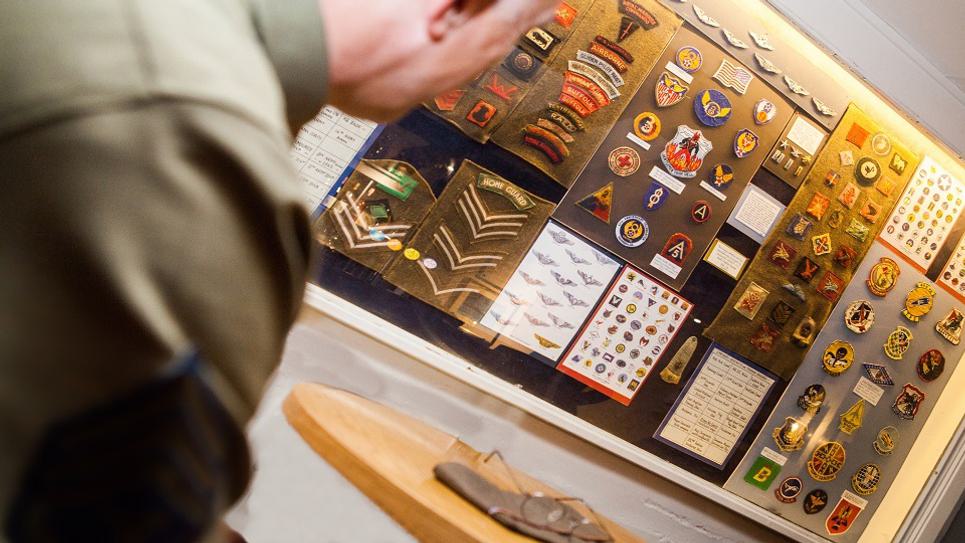
The Airmen's Bar in Lavenham
Lavenham Airfield is also mentioned in Masters of The Air. It was operational during the Second World War between March 1944 and August 1945. It was manned by the US Army Air Force 487th Bomb Group, who flew 185 missions and over 6,000 sorties. The airfield was known as USAAF Station 137.
The group flew both the Consolidated B-24 Liberator and the Boeing B-17 Flying Fortress as part of the Eighth Air Force's strategic bombing campaign and began combat in May 1944, bombing airfields in France in preparation for the invasion of Normandy, then targeted coastal defences, road junctions, bridges and locomotives during the invasion.
The unit's first commander was Lieutenant Colonel Beirne Lay, Jr., a prominent Hollywood screenwriter until he was shot down on 11 May 1944 in one of the group's earliest actions. He was shot down over enemy territory but evaded capture and was returned to duty. After the war, he wrote the screenplay for the 1949 film, Twelve O'Clock High, a Hollywood blockbuster starring Gregory Peck.
Lavenham Airfield has now reverted to arable farmland. The control tower remains but the majority of the Airfield is private property.
During World War II, many British and American servicemen stationed at RAF Lavenham; would call The Swan their local pub.
Over 1,000 signatures adorn the walls of the Airmen’s Bar, lovingly preserved by The Swan at Lavenham Hotel & Spa, and there is an extensive collection of military memorabilia including military cap badges and shoulder titles, making it an inspiring setting to relax over a drink or two, or enjoy a light meal.
The writing on the wall includes the names of the servicemen who took up the challenge of downing a 3.5 pint boot of ale and how long it took them; the record seems to be an amazing 40 seconds held by WH Culling! The Swan were most grateful that the signatures on the wall were recorded for posterity, during ‘The Eighth in the East’ ‘Signatures Project’ in 2015, which is still available to view online.
American bomber pilot Bernard Nolan, 91 returned to The Swan in 2013 where his signature appears on a wall alongside the names of dozens of his comrades. He travelled from his home just outside Washington DC to revisit Suffolk and promote his re-printed book – The Deadly Skies: The Air War in Europe 1940-1945 – which documents the experiences of wartime pilots.
When, as a 21-year-old, he first encountered the Old Bar and signed the wall in 1944, it was in very different circumstances. He was one of very few pilots to fly both B24 and B17 bombers, completing a total of 33 missions in the two aircraft during his six month posting in Suffolk.
He recalled: “We were flying B24-H aircraft but a decision was made to convert to B17s. So in July 1944 the groups stepped down and flew no missions for a couple of weeks while the pilots and crew were retrained in B17s.” Mr Nolan remembers The Swan’s bar as being one of the few sources of entertainment for servicemen based near Lavenham. He said: “We weren’t confined to the base perimeters and we had a certain amount of freedom but there was little to do when you weren’t flying.
“Our places of escape were to go into Lavenham or to Bury St Edmunds, which had great dances where you could meet girls. We could get to Lavenham quite easily from where we lived in a Nissen hut just a few fields away”.
Visit The Memorials
Flight of Peace Sculpture
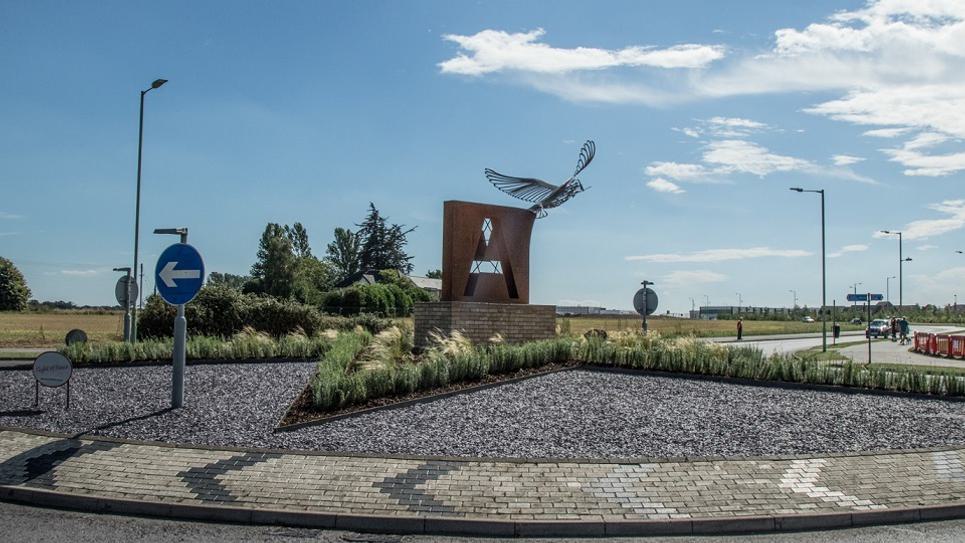
The Flight of Peace Sculpture in Memory of the 94th Bomb Group
The Flight of Peace sculpture on the Lady Miriam Way roundabout commemorates the US Air Force’s arrival at Rougham Airfield.
The breath-taking B17 Flying Fortress commemoration sculpture, with a dove of peace blossoming from it, is a symbolic remembrance of those gallant American servicemen who, by preparing, maintaining and flying the B17 Flying Fortress bombers, contributed to lasting peace in Europe.
Designed by Roy Proctor and fabricated by Nigel Kaines, of Designs on Metal, the sculpture was unveiled in 2016.
The aircraft from Rougham Airfield were identified by the letter A in a square background on the tailfin, which is captured in the sculpture. The landscaping of the roundabout represents the United States five pointed white star in a blue circle. The star is planted with ‘white’ grasses together with white flowering plants and is surrounded with loose ‘blue’ slate.
The Appleby Rose Garden in the Abbey Gardens
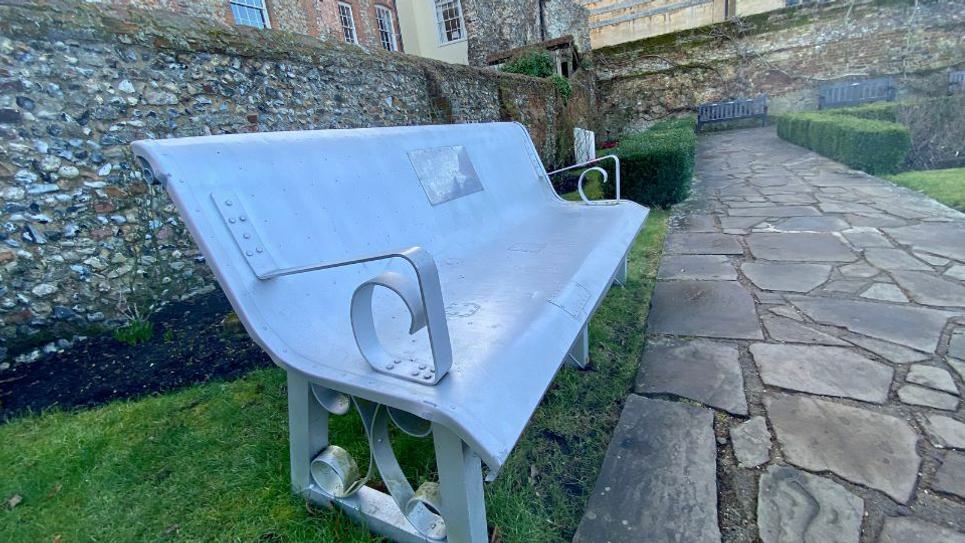
The beautiful bench made from the wing of an American 'Flying Fortress Bomber'
When John Tate Appleby from Arkansas stumbled from a train on to the dark and rainy platform at Cockfield railway station in Suffolk one evening in March 1945, the war in Europe was all but over.
The last mission of the 8th US Army Air Force flew in April 1945, just after John Appleby’s arrival at the 487th Bomb Group in Lavenham. During the seven months that he spent in Suffolk, he appears to have had plenty of spare time, which he spent travelling around East Anglia, mainly by bicycle. Although he admired Cambridge, Ely and Norwich, John Appleby fell in love with Suffolk and the result was a book, Suffolk Summer, which has charmed its readers ever since.
He donated his royalties from the book to fund The Abbey Gardens Rose Garden as a lasting memorial to the brave young men who lost their lives so far from their homeland.
Originally an orchard, the garden has over 400 rose bushes and a very unique feature is a beautiful bench made from the wing of a USAAF B17 Flying Fortress.
There's also a stone monument in memory of the 94th Bomb Group. Unveiled in 1977, the monument is dedicated to those Americans ‘who gave their lives during World War II’.
St Edmundsbury Cathedral overlooks the garden with its magnificent Millennium Tower. When the war was over and the 94th Bomb Group returned to the US, the base commander handed into the safe-keeping of St Edmundsbury Cathedral, the United States flag which had flown at the base.
A subsequent base commander at Mildenhall offered a replacement to fly in the Cathedral, but it was felt at the time that the original worn flag had great sentimental worth, and it is still cherished as a memorial of a close war-time relationship between the town and those American Airmen who flew into combat.
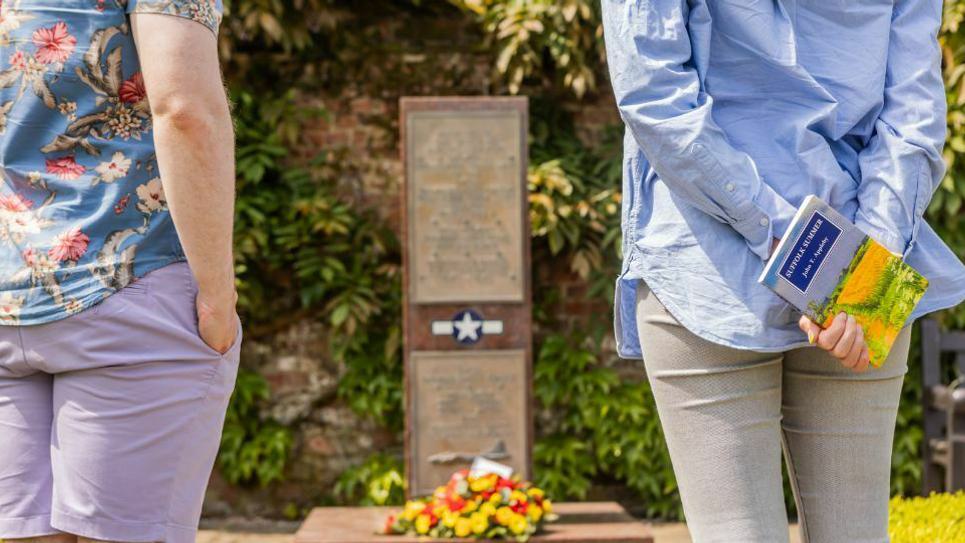
A stone monument in memory of the 94th Bomb Group
The Eighth In The East
An interactive guide to visit many of the wonderful heritage sites connected with the 8th USAAF in the East of England can be found at The Eighth in The East website.
From small volunteer-run museums to national cemeteries, archive centres and even quiet village inns, there’s sure to be something for everyone. The guide shares key tourist information and enables you to find out more about this important period in the region’s history.
Related Events
Related Blogs

How a Bury St Edmunds Air Base Made History
Bury St Edmunds was home for thousands of American…
View More
Visit the Only Surviving WWII Royal Observer…
Bury St Edmunds Guildhall contains the only surviving…
View More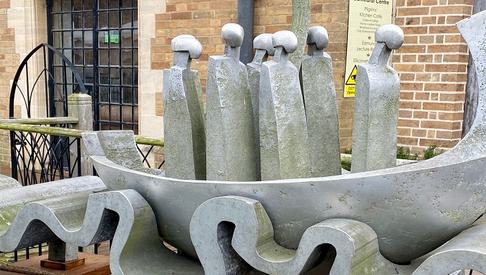

Untold Stories of Masters of the Air:…
The extraordinary stories of the Americans who came to…
View More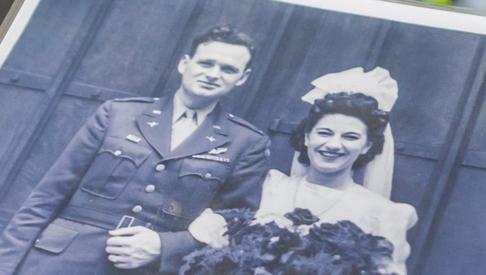
Untold Stories of Masters of The Air: Edith…
How Local Girl Edith Married Handsome American GI Tom
View More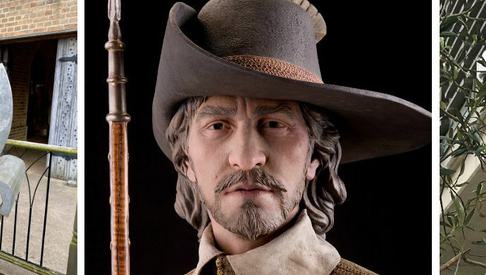
How A Bury Lawyer Founded Jamestowne
Discover how lawyer Bartholomew Gosnold left Bury St…
View MoreLatest news

News
Enjoy a Festive Afternoon Tea in 2025
Celebrate the Christmas season with a festive afternoon tea in Bury St Edmunds & Beyond...

News
Festive Winter Walks
Get outside and enjoy the fresh crisp winter air with one of these walks in Bury St Edmunds and Beyond!

News
Bury Tour Guides to launch new tours next year after successful 2025
Bury St Edmunds Tour Guides to Introduce new tours in 2026 and continue the successful Food and Drink Tours!

News
New in Bury St Edmunds For 2026
A sneak peak into new attractions visitors can enjoy in Bury St Edmunds in 2026.

News
Baby It's Cold Outside... Things To Do When the Weather Turns Frosty
Just because the temperature’s dropped doesn’t mean the fun has to! If you’re visiting town during the chillier months, there’s still plenty to see, do, and experience.

News
Places to sit by a roaring fire in Bury St Edmunds & Beyond
Warm up by a roaring fire this winter in Bury St Edmunds & Beyond...

News
Christmas Park and Walk 2025
Additional parking has been provided by West Suffolk Council in partnership with Greene King this Christmas.

News
Festive Theatre Guide 2025
There’s no better way to summon the magic of the festive season than a trip to the theatre.

News
Festive Markets in Bury St Edmunds
Festive markets are set to bring seasonal cheer to Bury St Edmunds this November and December, offering the perfect chance to pick up all of your Christmas essentials!
